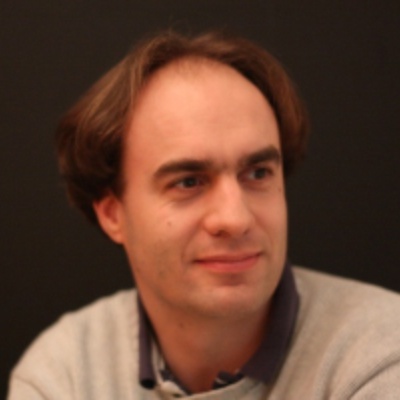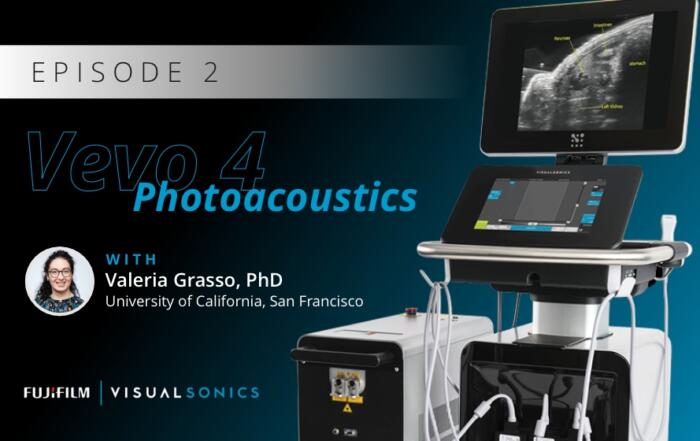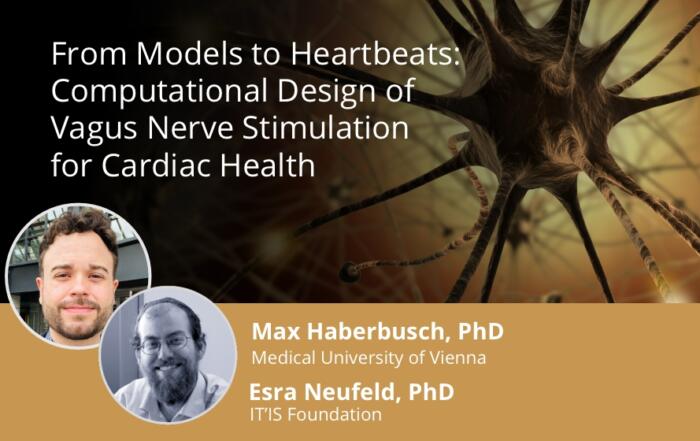Join Dr. Sicard for an examination of the systemic effects of myocardial infarction using high-frequency ultrasound and photoacoustics.
In this webinar, Pierre Sicard, PhD, a Research Engineer at INSERM in Montpellier, France, presented how real-time measures of vascular hypoxia are detected in the heart, brain and peripheral organs post-infarct. He shared cutting-edge multi-modal anatomical, physiological, and oxygenation data from his extensive work in the field.
Key Topics Include:
- Photoacoustic Imaging (PAI) is able to detect and track hypoxia in the LV anterior wall after myocardial infarction
- Experimental myocardial infarction induced an early and transient decrease of sO2 in the brain, kidney, and liver
- sO2 level in vital organs was significantly correlated with LV dysfunction and circulating biomarkers (creatinine, ASAT, and ALAT)
- Non-invasive PAI enabled a robust and time-dependent sO2 mapping in peripheral organs and the brain after MI
Who Should Attend?
Researchers at any level who study myocardial infarction or ischemia anywhere in the body, those interested in photoacoustics or anyone interested in the use of ultrasound for imaging rodent models.
Click to watch the webinar recording. To view the presentation full screen simply click the square icon located in the bottom-right corner of the video-viewer.
Presenters
Research Engineer
Montpellier University
Dr. Pierre Sicard is a research engineer at INSERM in Montpellier, France. He leads the ultrasound/photoacoustic platform in Montpellier (IPAM/INSERM/ Montpellier University). Dr. Sicard obtained in 2007, from the University of Burgundy, a PhD in Cardiovascular physiology. He studied the interplay between oxidative stress, hypertension and their consequences on the heart. In 2007, he joined the cardiovascular division at St Thomas’ Hospital (King’s College London, UK) as a postdoctoral fellow to investigate the importance of p38 MAPK isoforms during experimental myocardial infarction. He continued his research in the Institute of Metabolic and Cardiovascular Diseases in Toulouse (France) in order to develop a bench to bedside project about the potential contribution of Gadd45 proteins in post-myocardial infarction remodeling. His current research interests focused on the mechanism involved in multiple-organ dysfunction after right or left ventricular myocardial infarction.
Webinar Host
FUJIFILM VisualSonics Inc.
FUJIFILM VisualSonics designs and manufactures ultra high frequency in vivo imaging systems, for both research and clinical use. our ultrasound platform provides images at resolutions that far exceed any other system available on the market. Beyond ultrasound, we have also developed a unique photoacoustic technology to expand on the capabilities of our imaging solutions.
Additional Content From FUJIFILM VisualSonics Inc.
Photoacoustic Imaging in Angiotensin II Induced Cardiac Hypertrophy Mice
Hear Dr. Emily Lupton on her lab's investigation whether photoacoustic imaging (PAI) could provide novel imaging in the heart after angiotensin-II induced hypertrophy with and without treatment with losartan.
The Translational Utility of Ultrasound and Photoacoustics in Head and Neck Oncology
Dr. Mukund Seshadri presents his interdisciplinary research on developing and evaluating ultrasound and photoacoustic imaging for oral oncology applications, with a focus on the prognostic utility of these methods in assessing treatment responses in head and neck cancer patients.
Superpixel Unmixing Algorithm from Micro to Macro Photoacoustic Imaging of Tissue Components
Dr. Valeria Grasso describes a novel unsupervised Machine-Learning method named Superpixel Photoacoustic Unmixing (SPAX) framework.
Related Content
Getting to the Heart of Cardiovascular Research: From Yesterday to Today and Looking Towards Tomorrow
Dr. Melanie White presents the various methods for assessing cardiac function in the context of pathology, spanning from in vitro to in vivo techniques, and how she integrates these with cutting-edge mass spectrometry in her research on cardiovascular disease pathogenesis.
Understanding Advanced Cardiac Tissue Slice Applications
Watch to understand how cardiac slices and the IonOptix Cardiac Slice System can be used to complement and improve upon traditional cardiac investigations.
From Models to Heartbeats: Computational Design of Vagus Nerve Stimulation for Cardiac Health
This webinar explores closed-loop cardiac rhythm control restoration in heart-transplant patients from model development to in silico regulatory evidence for safety and efficacy trials.







